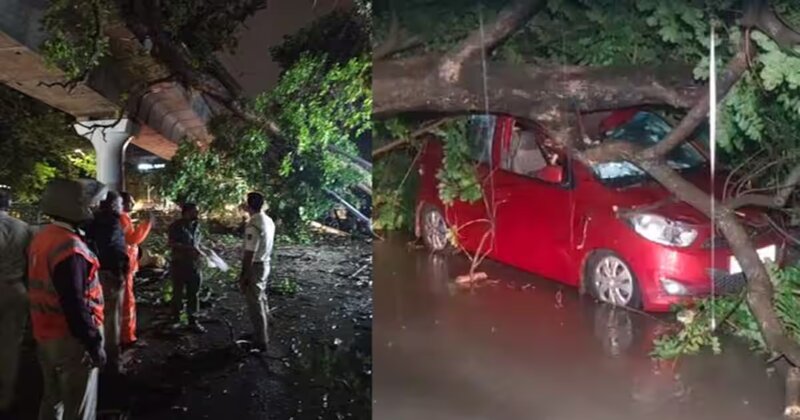
Bengaluru, known as the Garden City, is now grappling with a serious issue as ornamental trees, once planted to enhance the city’s beauty, are increasingly becoming a hazard to residents. These foreign species, introduced 30 to 40 years ago, are now revealing their vulnerabilities, unable to withstand even moderate rain and wind.
The Bruhat Bengaluru Mahanagara Palike (BBMP) reports that over the past four months, more than 1,200 trees have fallen across the city, with the southern zone being the most affected. The uprooting of these trees has caused significant disruption, including blocked roads, damaged vehicles, fallen power lines, and risks to pedestrian safety.
Criticism is mounting over the BBMP’s preference for these ornamental, non-native species. Environmental experts argue that these trees, despite their visual appeal, have shallow root systems that don’t anchor well into the ground, making them prone to toppling during the city’s frequent rain showers. In the southern zone alone, 383 trees have fallen, followed by 239 in the west zone, and 189 in RR Nagar, with a total of 1,271 trees uprooted citywide since May.
As a result, there is a growing call from environmentalists for the BBMP to rethink its approach to urban greenery. They advocate for the planting of native species such as Ashwath, Arali, Honge, Tamarind, Mango, Neem, Jackfruit, and Akashgange. These indigenous trees are known for their strong root systems that penetrate deep into the earth, providing greater stability and resilience against harsh weather conditions, allowing them to stand strong for hundreds of years.
Zone-wise tree fall statistics:
– South Zone: 383
– West Zone: 239
– RR Nagar: 189
– East Zone: 129
– Yelahanka Zone: 99
– Bommanahalli Zone: 87
– Mahadevapura Zone: 76
– Dasarahalli Zone: 69

Post Your Comments